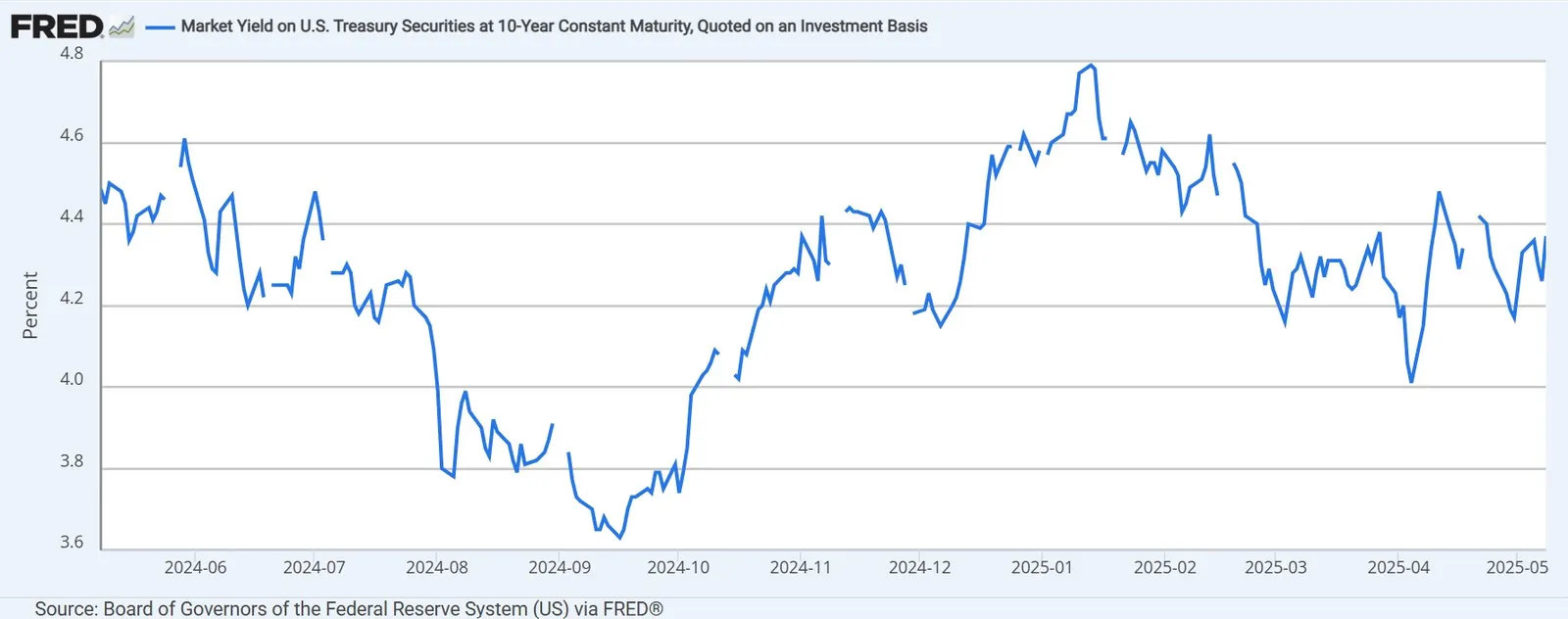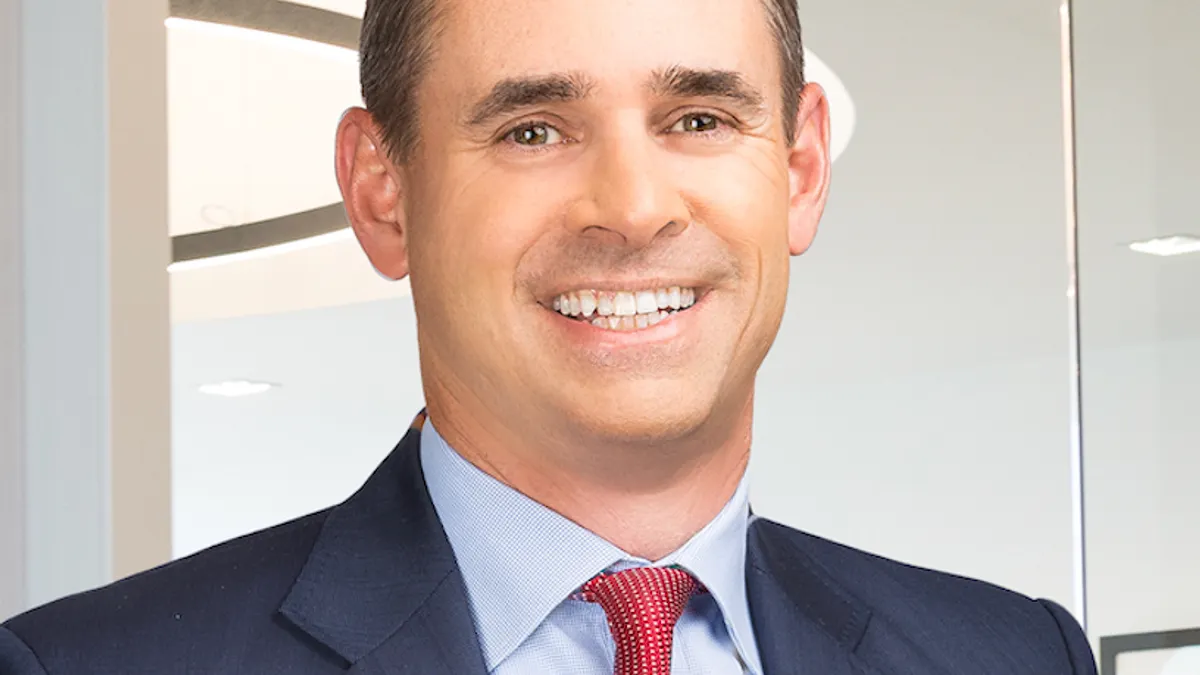In the three years since the Federal Reserve began hiking interest rates, apartment buyers and sellers have grown accustomed to dealing with volatility when underwriting deals.
But the recent volatility in the 10-year Treasury, a key benchmark for pricing loans, has presented a new challenge.
“Volatility in the bond market is creating major challenges for apartment investors trying to finance or refinance properties,” said Garett Bjorkman, co-CEO of PEG, a Provo, Utah-based owner, operator and developer of multifamily, hospitality and build-to-rent properties. “With interest rates elevated and Treasury yields fluctuating, borrowing costs have risen sharply, making deals harder to pencil.”
For both new acquisitions and refinancing, investors have found it harder to make the numbers work. But by being patient, flexible and looking for opportunities, investors can navigate the volatility and continue to close deals.
Hitting at the wrong time
The 10-year Treasury swung wildly in April, dropping as low as 3.86% at one point in the month before rallying to 4.44% and then falling back to 4.16% at the end of the month. The volatility was the result of a major sell-off after President Donald Trump’s “Liberation Day” tariff announcement at the beginning of the month.
For some apartment investors, the volatility was merely a continuation of what they had dealt with since the Fed began raising rates in 2022.
“The bond market obviously impacts the interest rates for loans; however, the market has almost come to expect this type of volatility,” said Scott Lebenhart, chief investment officer at New York City-based apartment owner Ashcroft Capital. “We have seen some major swings in rates recently, yet this is not dissimilar from previous fluctuations in rates.”

But that doesn’t make the situation any easier for buyers that are underwriting properties. “Bond market volatility has definitely tightened the screws — financing is tough, refinancing even tougher,” said Rene Bello, founder and CEO of Miami-based real estate investment and development firm BLDG Ventures. “Rates are unpredictable, and lenders are much stricter with underwriting. Few deals pencil out, and many who were hoping for lower rates are either shelving plans or reworking their numbers to meet tighter standards.”
Tyler Chesser, co-founder and managing partner of Louisville, Kentucky-based apartment owner CF Capital, also said lenders are being more selective, and many deals now demand more equity or creative structuring.
"The bond market’s volatility has fueled major uncertainty around interest rates, making it much harder for apartment investors to close acquisitions or refinance maturing loans,” Chesser said.
The Treasury swings hit at an especially tenuous time with what some estimate as $300 billion worth of apartment loans maturing this year, according to Mortgage Bankers Association.
“This is especially tough for the billions in multifamily loans set to mature by the end of 2025, many of which now face refinancing hurdles due to higher rates and tighter lending standards,” Bjorkman said. “The instability has also cooled investor appetite, with many holding off until rate conditions stabilize.”
Patience and flexibility are key
While volatility makes underwriting deals challenging, apartment investors have become increasingly adaptable over the past couple of years.
“For investors who know how to pivot, this environment is full of opportunity,” Bello said. “We're seeing success by assuming low-rate loans when possible, structuring smarter debt and doubling down on property performance.”
For instance, in March Altus Equity Group acquired six garden-style apartment communities totaling 1,225 units with assumable loans in place in the Midland-Odessa region of Texas.
However, it's not every day that investors can find a property where the debt is assumable. In those cases, Chesser said, “success hinges on disciplined underwriting, aggressive stress testing and staying flexible across the capital stack to adapt as conditions shift."
When buyers are shopping for financing, Ashcroft Capital’s Lebenhart cautions them to layer in some cushion in rates.
“Over the past six months, the 10-year Treasury has averaged around 4.4%, which is essentially the same rate as of April 2022,” Lebenhart said. “Although there have been these large swings in the rates, the peaks and troughs have not lasted for extended periods of time. Overall, we have found the need to maintain patience when rates pop while being able to act decisively when rates drop.”
Fixed-rate financing also offers some predictability, while strategies like duration management and tactical asset allocation can help navigate rising-rate environments, according to Bjorkman.
However, getting tied down to long-term loans based on today’s Treasury rates can also be a problem. Tyler Epps, senior vice president of originations for Los Angeles-based fund manager American South Capital Partners, said his firm doesn’t want to lock itself into debt in the high 6% and low 7% range for an extended period of time.
“I think we're being very cautious with doing any of those longer-term, fixed-rate financing programs that are based off of Treasurys right now,” Epps said.
Click here to sign up to receive multifamily and apartment news like this article in your inbox every weekday.


















